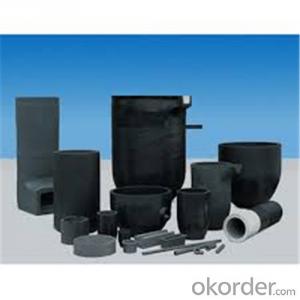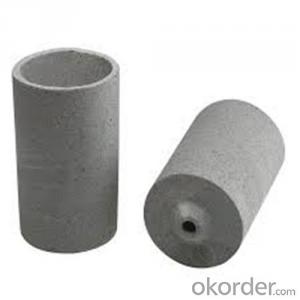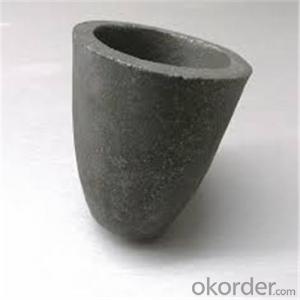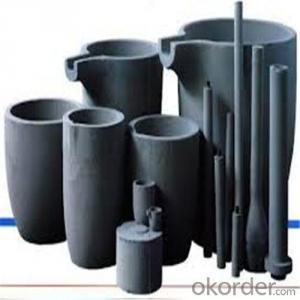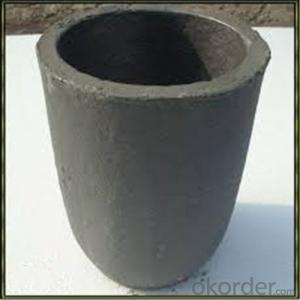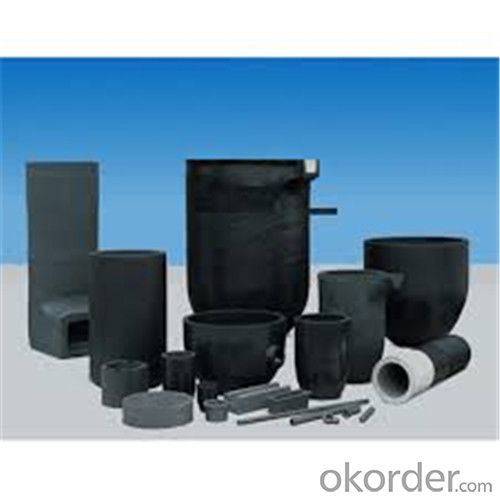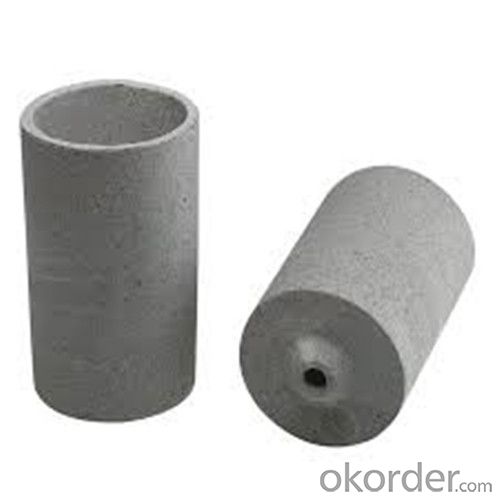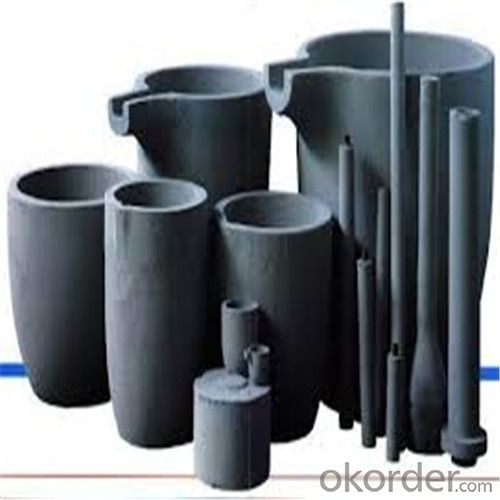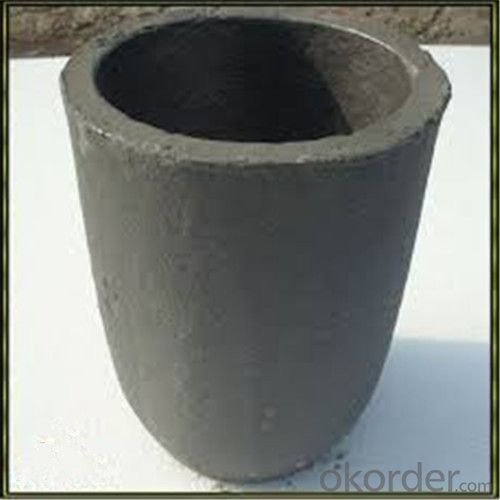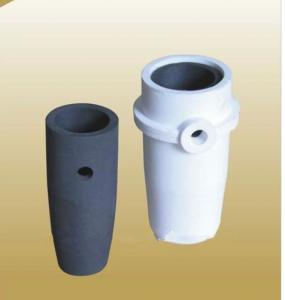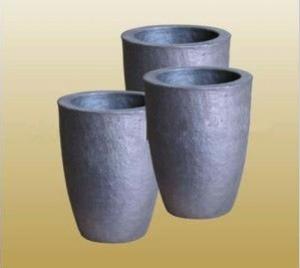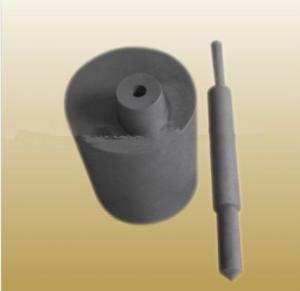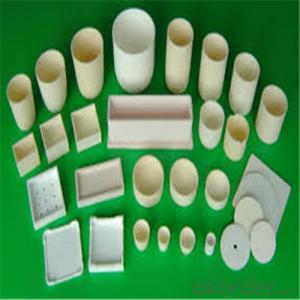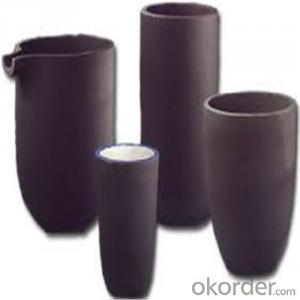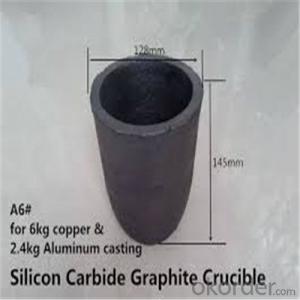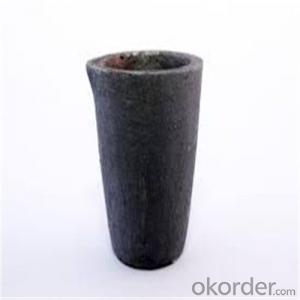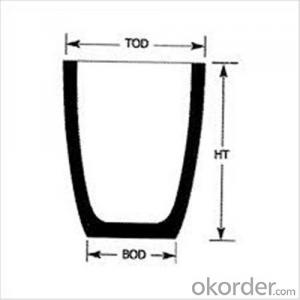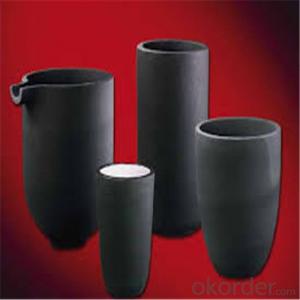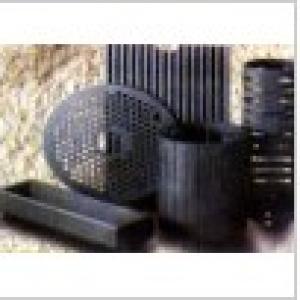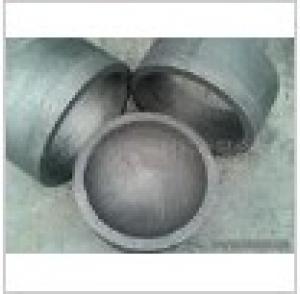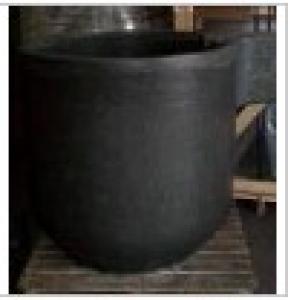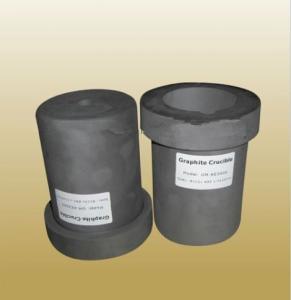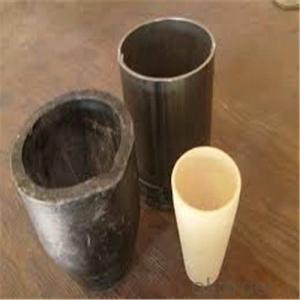Buy Graphite Crucible - Refractory SIC Crucible for Brass/Aluminum 2024
- Loading Port:
- Shanghai
- Payment Terms:
- TT OR LC
- Min Order Qty:
- 1 pc
- Supply Capability:
- 1000 pc/month
OKorder Service Pledge
OKorder Financial Service
You Might Also Like
Quick Details for Refractory Crucibles Sic Crucible For Melting Copper/Brass/Aluminum
| Type: | High Strength, graphite crucible crucible | Application: | melting metal | Height: | as your requirements |
| Composition: | High Pure | Top Diameter: | 10-600mm | Bottom Diameter: | 10-1000mm |
| Place of Origin: | China (Mainland) | Brand Name: | Model Number: | ||
| Color: | Black grey | Si3N4%: | 5min | Fe2O3%: | 0.7max |
| C%: | 30-45 | Apparent porosity: | 30max | Refractoriness: | 1680 |
| Bulk Density: | 1.71min | Using life: | >5000 hours | MAX temperature: | 1600c |
Packaging & Delivery
| Packaging Details: | Seaworty packing or as per customer's detail requirement of graphite crucible. |
| Delivery Detail: | within 20-30 days after confirm order of graphite cru |
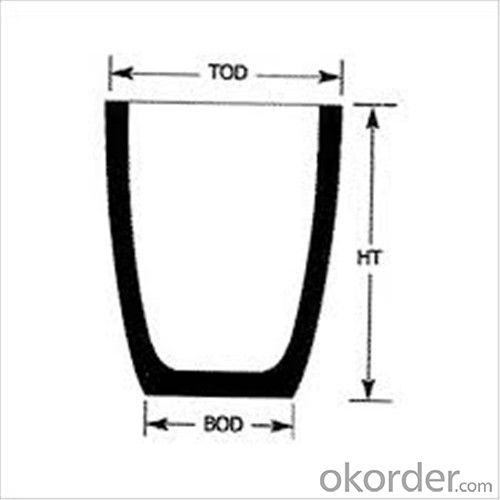
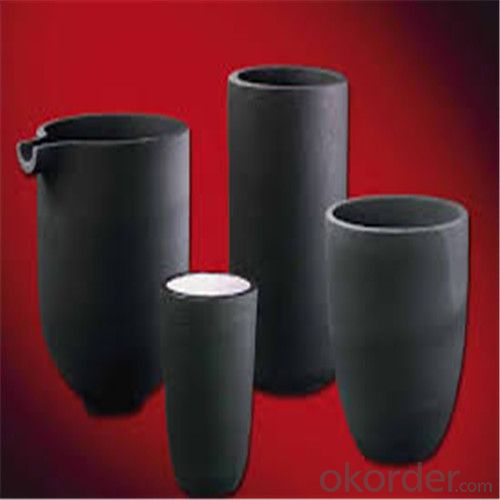
Refractory Crucibles Sic Crucible For Melting Copper/Brass/Aluminum
Physicochemical Properties
Type of Crucible | Type S | Type D |
Carbon Content/% | ≥38 | ≥45 |
Bulk Density/(g/cm3) | ≥1.70 | ≥1.85 |
Apparent Porosity/% | ≤29 | ≤21 |
Compression Strength/MPa | ≥20 | ≥25 |
Refractoriness/°C | ≥1400 | ≥1400 |
Type S: Clay graphite crucible
Type D: Isostatic pressing graphite crucible
Cited from CNS China National Standard of Graphite Crucible, which is solely drifted by TIANFU company.
Content Composition
C% | Sic% | AL2O3% | SIO2% |
45%-50% | 20%-30% | 10%-12% | 15-25% |
Packaging & Shipping
Package: Wooden case and wooden pallet or pack as customer's requirement of graphite crucible.
Delivery time: depend on distance, usually 20 days to 50days after deposit of graphite crucible.
We can supply the products according to customer's drawings, samples and performance requirement.
Other Products


Welcome to visit our factory.
- Q: Can a graphite crucible be used for sapphire crystal growth?
- Indeed, a graphite crucible is capable of being utilized for the purpose of sapphire crystal growth. It is a widely employed instrument in applications that involve high temperatures, particularly in processes pertaining to crystal growth. The growth of sapphire crystals necessitates temperatures exceeding 2000°C, and graphite crucibles possess the ability to endure such extreme temperatures without undergoing any reaction or contaminating the crystal. Moreover, graphite crucibles exhibit exceptional thermal conductivity, thereby assisting in the maintenance of a consistently uniform temperature throughout the crystal growth process. Consequently, graphite crucibles emerge as a fitting option for the growth of sapphire crystals.
- Q: How about the water content of Zinc Oxide in indirect method?
- The indirect method of Zinc Oxide standard GB/T3185-92, raw material except zinc ingots, the main raw materials for the production of zinc slag is the indirect method of Zinc Oxide. Well, Zinc Oxide pure zinc process, content production can reach more than 99.8%.
- Q: Can graphite crucibles be used for carbon fiber production?
- Yes, graphite crucibles can be used for carbon fiber production. Graphite crucibles are commonly used in high-temperature applications due to their excellent thermal conductivity, high melting point, and chemical resistance. In the production of carbon fiber, graphite crucibles can be used to heat and melt the precursor materials, such as polyacrylonitrile (PAN) or pitch, which are then processed through a series of steps to produce carbon fiber. The high-temperature stability and non-reactivity of graphite make it an ideal material for maintaining the necessary conditions during the carbonization process. Additionally, the smooth surface of graphite crucibles helps in achieving uniform heat distribution, which is crucial for the quality and consistency of carbon fiber production. Therefore, graphite crucibles are a suitable choice for carbon fiber production.
- Q: Can graphite crucibles be used for ceramic production?
- No, graphite crucibles cannot be used for ceramic production. Ceramic production requires crucibles made from materials like alumina or zirconia, which can withstand high temperatures and provide a stable environment for the ceramic materials. Graphite crucibles are generally used for high-temperature applications involving metals and alloys.
- Q: Does a graphite crucible react with any substances during use?
- No, a graphite crucible does not react with any substances during use.
- Q: How do you determine the appropriate crucible pouring lip for a specific application?
- The appropriate crucible pouring lip for a specific application is usually determined by considering factors such as the desired pouring speed, the material being poured, the temperature, and the required precision. It is important to choose a lip design that allows for controlled and accurate pouring without spilling or splashing, while also considering the ease of handling and the size of the crucible.
- Q: Can graphite crucibles be used for electron beam melting processes?
- Yes, graphite crucibles can be used for electron beam melting processes. Graphite is a preferred material for high-temperature applications due to its excellent thermal conductivity and resistance to thermal shock. In electron beam melting, the crucible containing the material to be melted is subjected to an intense electron beam, and graphite crucibles can withstand the high temperatures and provide efficient heat transfer required for this process.
- Q: Can quartz ceramic crucibles instead of graphite crucibles?
- Graphite heat resistance is much higher than that of quartz ceramics; graphite can be more than 2000, while the highest resistant quartz ceramics 1700 degrees.
- Q: There is a good graphite mold supplier, which is the kind of diamond cutter head?
- Henan Huixian a lot of people in the gold Goushi graphite mould tool industry.
- Q: Is it possible to achieve a controlled atmosphere inside a graphite crucible?
- Yes, it is possible to achieve a controlled atmosphere inside a graphite crucible. Graphite crucibles are commonly used in high-temperature applications such as melting metals and alloys. In order to achieve a controlled atmosphere, various methods can be employed. One method is to use a gas purging system. This involves introducing a specific gas into the crucible to create the desired atmosphere. For example, if an inert atmosphere is required, gases like argon or nitrogen can be used to displace any oxygen or other reactive gases present. The flow rate and pressure of the gas can be controlled to maintain the desired atmosphere. Another method is to create a sealed environment around the crucible. This can be achieved by using a furnace or an induction heating system with a gas-tight enclosure. By controlling the gas composition and pressure within this enclosure, a specific atmosphere can be maintained around the crucible. Additionally, it is important to consider the crucible material itself. Graphite is known for its high thermal conductivity, which means it can transfer heat quickly. However, it can also be reactive with certain gases or metals at high temperatures. Therefore, selecting the appropriate grade of graphite and ensuring proper crucible conditioning can help maintain a controlled atmosphere. Overall, with the right equipment and techniques, it is possible to achieve a controlled atmosphere inside a graphite crucible, allowing for precise control of the environment during high-temperature processes.
Send your message to us
Buy Graphite Crucible - Refractory SIC Crucible for Brass/Aluminum 2024
- Loading Port:
- Shanghai
- Payment Terms:
- TT OR LC
- Min Order Qty:
- 1 pc
- Supply Capability:
- 1000 pc/month
OKorder Service Pledge
OKorder Financial Service
Similar products
Hot products
Hot Searches
Related keywords
